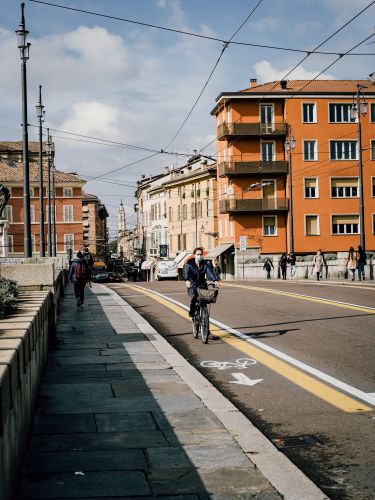BOULDER, Colo. (BRAIN) — A study measuring how well bicycling infrastructure advanced transportation alternatives across socioeconomic and demographic groups will help guide cities building equitable infrastructure, according to the Better Bike Share Partnership.
"The study will provide a different narrative for understanding the potential impacts of these investments," said Kiran Herbert, Better Bike Share Partnership local programs writer and content manager.
Entities that make up the Better Bike Share Partnership — a collaboration funded by The JPB Foundation to build equitable bike share systems — are the city of Philadelphia, the National Association of City Transportation Officials, and the PeopleForBikes Foundation.
"That doesn't let cities off the hook for doing good community engagement — in fact, it elevates the importance of working in partnership with community members to address their needs and involve them in the planning process," Herbert said. "This study to me says, 'Yes, build those bike lanes — but do so in a way that engages the community from the start and accounts for specific needs throughout.'"
Long term, Herbert suggested, the study provides another model for measuring the impacts of implementing infrastructure.
"So cities must acknowledge and account for that," Herbert said. "I think it also offers a lot of food for thought when it comes to thinking about mobility justice and what encompasses gentrification. Sure, we might not be displacing folks with bike lanes, but that doesn't mean we're doing a great job of listening to them and accounting for the needs of a wide subset of people."
The study by Nicholas N. Ferenchak of the University of New Mexico and Wesley E. Marshall of the University of Colorado looked at 11,010 bike facility miles over 10 years (2010-2019) in 29 cities and suggests inequalities in bike infrastructure outside downtown areas.
The cities studied were Chicago; Houston; Philadelphia; Dallas; Austin, Texas; Seattle; San Francisco; Seattle; Denver; Washington; Memphis, Tennessee; Portland, Oregon; Oklahoma City; Baltimore; Kansas City; Minneapolis; Alexandria, Virginia; Pasadena, California; Fullerton, California; Columbia, South Carolina; New Haven, Connecticut; Norman, Oklahoma; Cambridge, Massachusetts; Boulder, Colorado; Iowa City, Iowa; Passaic, New Jersey; Eau Claire, Wisconsin; Portland, Maine; Youngstown, Ohio; and East Orange, New Jersey.
"While lower-income white neighborhoods — where we might expect lower vehicle ownership and higher want or need of access to safe and comfortable active transportation facilities — had high levels of bike facilities installed, (people of color) areas had the lowest rates of overall installation," the study's authors wrote. "Lower-income white block groups had 45.9% more bike facilities installed than lower-income POC block groups and 46.2% more facilities installed than higher-income POC block groups."
According to the study, the causality relationships between bike facilities and socioeconomic and demographic changes were "largely non-significant." And for advocates concerned about new bike lanes resulting in forcing out historically marginalized groups, the study suggests otherwise.
"Bike lanes have been described as 'a tell-tale sign of gentrification,' and it is not uncommon to see popular press articles such as 'Why are bike lanes such heated symbols of gentrification' in The Washington Post or 'Blame it on the bike: Does cycling contribute to a city's gentrification' in The Guardian," the study notes. "Thus, the bicycling facility inequalities we found in the first part of this paper may be due to lack of community support in some neighborhoods. Trying to more evenly distribute such facilities by imposing them onto unwilling communities may be problematic. This point is why we use the term 'inequality' throughout this paper as opposed to 'inequity,' as it is still possible that the inequalities observed do indeed meet demand."
Zoe Kircos, Better Bike Share Partnership manager, said the study's overall conclusions were interesting.
"There's definitely a narrative that bike infrastructure leads to gentrification and displacement, or that it's a sign of it, and the evidence supports the finding that Black and brown communities have less bicycle infrastructure," Kircos said. "We have heard anecdotally that people in these communities don't want bicycle facilities because of the concern over displacement."
Kircos said she hasn't found a study that measures the connection between bike infrastructure construction and displacement.
"So that's really interesting — and merits further study," she said. "What's not surprising is the authors' conclusion that gentrification is a multifaceted issue — just because people aren't being displaced, doesn't mean that bike lanes aren't affecting their lives — community outreach is always an integral part of the work."


